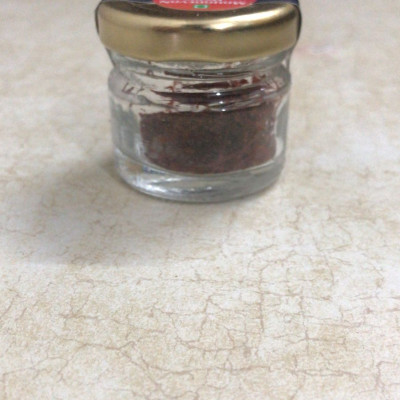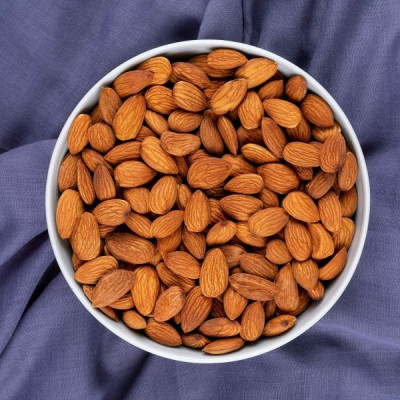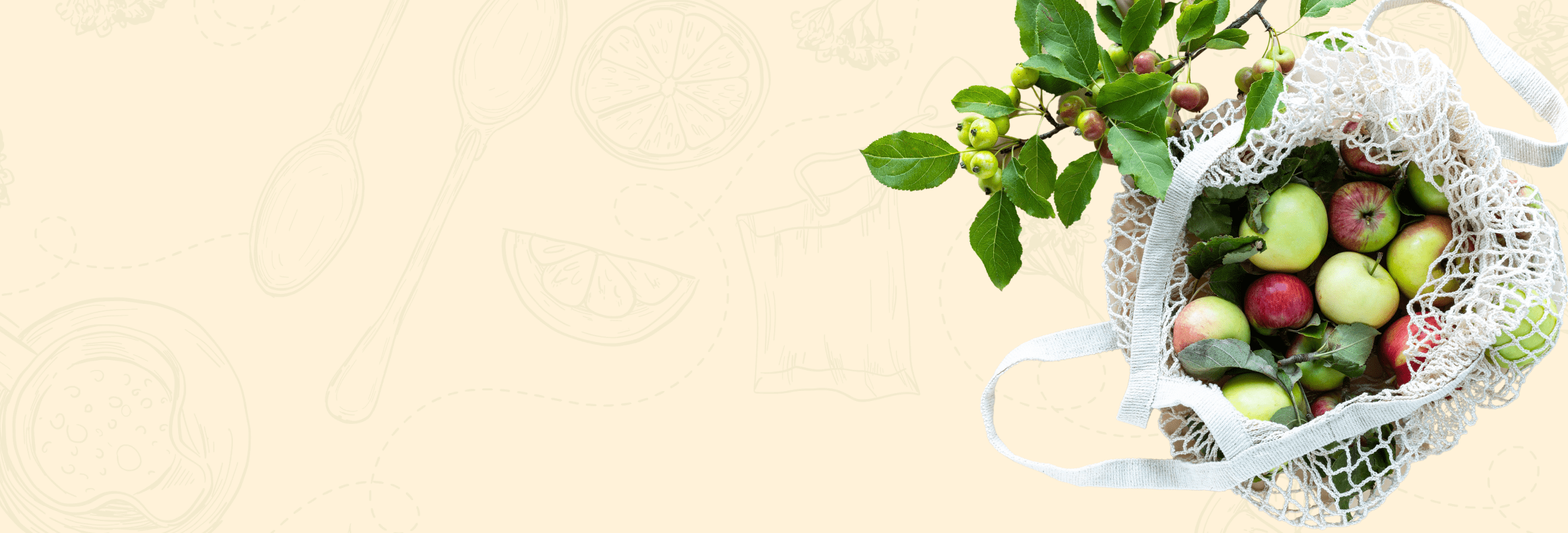DRY FRUITS
Crack, Crunch, Enjoy: Embrace the Wholesome Delight of In-Shell Walnuts

ABOUT IN-SHELL WALNUTS
Introduction to In-shell Walnut
In-shell walnuts, also known as unshelled walnuts, are whole walnuts enclosed in their natural hard shell. These walnuts have a distinct appearance and offer a unique experience for those who enjoy cracking the shell to reveal the delicious nut inside. In-shell walnuts are a popular choice among walnut enthusiasts and are widely available in the market.
The in-shell walnuts have a characteristic oblong shape with a slightly pointed end. They are typically brown in color, with variations ranging from light to dark shades. The hard shell of the walnuts provides protection to the kernel inside and helps maintain its freshness and quality.
Health benefits of in-shell walnuts:
In-shell walnuts not only have a delightful taste and texture but also offer a range of health benefits. Packed with essential nutrients, they can be a valuable addition to a balanced diet. Here are some of the health benefits associated with in-shell walnuts:
- Nutrient-Rich: In-shell walnuts are a nutrient-dense food. They are an excellent source of healthy fats, including omega-3 fatty acids, which are beneficial for heart health. They also contain protein, fiber, vitamins, and minerals, such as vitamin E, magnesium, and phosphorus.
- Heart Health: The omega-3 fatty acids found in in-shell walnuts, including alpha-linolenic acid (ALA), have been linked to a reduced risk of heart disease. These healthy fats help lower bad cholesterol levels, decrease inflammation, and improve blood vessel function, promoting cardiovascular health.
- Brain Function: The presence of omega-3 fatty acids in in-shell walnuts is also beneficial for brain health. These fats have been associated with improved cognitive function, memory, and brain development, making walnuts a brain-boosting snack.
- Antioxidant Power: In-shell walnuts are rich in antioxidants, including polyphenols and vitamin E. These compounds help protect cells from damage caused by harmful free radicals, reducing the risk of chronic diseases and supporting overall well-being.
- Weight Management: Despite being energy-dense, in-shell walnuts can aid in weight management. The combination of protein, fiber, and healthy fats in walnuts helps promote satiety, keeping you feeling fuller for longer. This can help control appetite and prevent overeating.
- Blood Sugar Control: In-shell walnuts have a low glycemic index, meaning they have a minimal impact on blood sugar levels. The combination of fiber, healthy fats, and protein in walnuts can help regulate blood sugar and insulin levels, making them a suitable option for individuals with diabetes or those aiming to manage their blood sugar levels.
- Bone Health: In-shell walnuts contain minerals like calcium, magnesium, and phosphorus, which are essential for maintaining healthy bones and teeth. These minerals contribute to bone strength and density, reducing the risk of conditions like osteoporosis.
- Digestive Health: The fiber content in in-shell walnuts promotes healthy digestion and aids in regular bowel movements. Including walnuts in your diet can help prevent constipation and support a healthy gut.
The nutritional profile of in-shell walnuts:
In-shell walnuts are not only delicious but also packed with essential nutrients that support overall health and well-being. Here is an overview of the nutritional profile of in-shell walnuts:
- Healthy Fats: In-shell walnuts are a rich source of healthy fats, particularly polyunsaturated fats, including omega-3 and omega-6 fatty acids. These fats are beneficial for heart health and play a crucial role in maintaining proper brain function.
- Protein: In-shell walnuts contain a moderate amount of protein, making them a valuable plant-based protein source. Protein is essential for muscle growth and repair, as well as various metabolic functions in the body.
- Fiber: In-shell walnuts are an excellent source of dietary fiber. Fiber is important for digestive health, promoting regular bowel movements, and reducing the risk of conditions like constipation and hemorrhoids. It also helps maintain satiety and aids in weight management.
- Vitamins: In-shell walnuts are a good source of various vitamins. They provide vitamin E, which acts as an antioxidant and supports skin health, immune function, and eye health. They also contain small amounts of B vitamins, such as thiamin, niacin, and vitamin B6, which are important for energy production and the proper functioning of the nervous system.
- Minerals: In-shell walnuts contain essential minerals, including magnesium, phosphorus, copper, and manganese. These minerals are involved in numerous bodily functions, such as bone health, energy production, and antioxidant defense.
- Antioxidants: In-shell walnuts are packed with antioxidants, including polyphenols and vitamin E. These antioxidants help protect cells from oxidative damage caused by free radicals and contribute to overall health and disease prevention.
- Phytochemicals: In-shell walnuts contain various bioactive compounds, such as ellagitannins and flavonoids, which have been associated with anti-inflammatory and anticancer properties.
Here are some creative culinary ideas for using in-shell walnuts:
- Snack on the Go: Enjoy in-shell walnuts as a convenient and nutritious snack. Crack open the shells and savor the crunchy texture and rich flavor. They make an excellent snack option for hiking, road trips, or whenever you need a quick energy boost.
- Salads and Grain Bowls: Add chopped in-shell walnuts to salads or grain bowls for an extra crunch and nutty flavor. They pair well with a variety of fresh vegetables, leafy greens, and grains. Try adding them to a kale and quinoa salad or a hearty grain bowl for added texture and nutritional value.
- Baked Goods: Incorporate in-shell walnuts into your favorite baked goods for a delightful twist. Add them to muffins, bread, cookies, or cakes to enhance both the taste and texture. Chopping the walnuts and folding them into the batter will provide a delicious nutty flavor and add a satisfying crunch.
- Homemade Granola and Trail Mixes: Create your own custom granola or trail mix by combining in-shell walnuts with other nuts, dried fruits, and seeds. The walnuts will provide a hearty texture and a rich, earthy flavor. Enjoy this homemade mix as a nutritious snack or sprinkle it over yogurt for added crunch.
- Nut Butter: Make your own in-shell walnut butter by grinding the shelled nuts in a food processor until creamy. This homemade nut butter can be spread on toast, used as a dip for fruits and vegetables, or added to smoothies for a protein-packed boost.
- Savory Dishes: In-shell walnuts can also be used in savory dishes to add depth and texture. Sprinkle chopped walnuts over roasted vegetables, incorporate them into stuffings for poultry, or use them as a topping for pasta dishes or grain salads. The combination of their nutty flavor and crunch can elevate the taste and presentation of various savory dishes.
- Cheese and Charcuterie Boards: Include in-shell walnuts as part of a cheese and charcuterie board. They pair wonderfully with a variety of cheeses, cured meats, fruits, and preserves. The combination of flavors and textures creates a delightful culinary experience.
Tips on adjusting flavors and textures when cooking or baking with in-shell walnuts:
- Toasting for Enhanced Flavor: To intensify the flavor of in-shell walnuts, consider toasting them before using them in your recipes. Simply spread the shelled walnuts on a baking sheet and toast them in a preheated oven at 350°F (175°C) for about 8-10 minutes, or until they become fragrant and slightly golden. Toasting enhances their nutty flavor and adds a delightful crunch to your dishes.
- Chopping and Slicing Techniques: Depending on the desired texture, you can adjust the way you chop or slice in-shell walnuts. For a finer texture, use a sharp knife or a food processor to finely chop the walnuts. This works well in recipes like pie crusts or when incorporating walnuts into cookies or bread dough. For a more rustic and chunky texture, use a knife to roughly chop the walnuts, resulting in larger pieces that add a satisfying crunch to salads, granola, or savory dishes.
- Balancing Sweetness and Saltiness: In-shell walnuts have a natural sweetness that can be balanced with a touch of saltiness in both sweet and savory recipes. For example, when using them in desserts like brownies or cakes, add a pinch of salt to the batter to enhance the flavors and create a more balanced taste. Similarly, in savory dishes like salads or stir-fries, a sprinkle of salt over the walnuts can help bring out their nutty flavor and complement the other ingredients.
- Combining with Other Flavors: In-shell walnuts have a versatile flavor that can complement a wide range of ingredients. Experiment with different flavor combinations to enhance your dishes. For example, pair the walnuts with dried fruits, such as cranberries or apricots, for a sweet and tangy twist. Incorporate them into dishes with herbs like rosemary or thyme to add an earthy and aromatic element. You can also explore flavor combinations with spices like cinnamon, nutmeg, or cayenne pepper to add warmth and complexity to your recipes.
- Adjusting Texture with Cooking Techniques: Depending on the desired texture in your dishes, you can use different cooking techniques when incorporating in-shell walnuts. For a softer texture, consider roasting the walnuts in the oven or sautéing them in a skillet with a little butter or oil. This can work well in recipes like pasta dishes or vegetable stir-fries. If you prefer a crunchier texture, add the walnuts towards the end of the cooking process or use them as a topping for salads or roasted vegetables.
Here are some exciting pairings and combinations to explore:
- Cheese: In-shell walnuts pair wonderfully with different types of cheese. The creamy and nutty flavors of walnuts complement the richness of cheeses like blue cheese, goat cheese, or Gouda. Serve them together on a cheese board or incorporate them into salads, pasta, or stuffed mushrooms for a delightful combination of flavors and textures.
- Fruits: In-shell walnuts work harmoniously with various fruits, adding a satisfying crunch and nutty flavor. Pair them with fresh fruits like apples, pears, or grapes in salads for a refreshing and textural contrast. You can also combine walnuts with dried fruits such as figs, dates, or apricots in desserts like fruit tarts or baked goods for a delightfully sweet, and nutty combination.
- Chocolate: The rich and earthy flavors of in-shell walnuts complement the sweetness of chocolate exceptionally well. Incorporate walnuts into brownies, cookies, or chocolate bark for a delectable combination of textures and tastes. You can also sprinkle chopped walnuts on top of chocolate desserts like cakes or mousses for an added crunch.
- Salads: In-shell walnuts add a crunchy element to salads, enhancing both the texture and flavor. Combine them with mixed greens, crumbled cheese, dried fruits, and a tangy vinaigrette for a delicious and satisfying salad. You can also toss them with roasted vegetables or use them in grain-based salads for added depth and nuttiness.
- Herbs and Spices: In-shell walnuts can be paired with a variety of herbs and spices to elevate their flavor profile. Add chopped walnuts to dishes seasoned with herbs like thyme, rosemary, or basil for an aromatic and herbaceous combination. Incorporate spices like cinnamon, nutmeg, or cardamom when using walnuts in desserts or baked goods to create warm and fragrant flavor profiles.
- Grains and Pasta: In-shell walnuts can be combined with grains and pasta for hearty and nutritious meals. Add them to grain salads or pilafs for a satisfying crunch and added protein. Toss walnuts with cooked pasta, vegetables, and a flavorful sauce for a quick and delicious meal.
Here are some flavor pairings that beautifully complement the unique characteristics of in-shell walnuts:
- Honey: The natural sweetness of in-shell walnuts can be enhanced by pairing them with honey. Drizzle a bit of honey over a handful of in-shell walnuts for a delightful combination of flavors. You can also incorporate this pairing into recipes like honey-glazed walnuts or honey-roasted walnuts for a delectable sweet and nutty treat.
- Citrus: The tartness of in-shell walnuts can be balanced with the bright and refreshing flavors of citrus fruits. Pair them with citrus segments such as oranges, grapefruits, or tangerines in salads or desserts for a burst of tanginess. The combination of the citrus's acidity and the nutty flavors of walnuts creates a harmonious and refreshing balance.
- Yogurt: Creamy and tangy yogurt complements the tartness of in-shell walnuts wonderfully. Enjoy a bowl of yogurt topped with crushed walnuts and a drizzle of honey for a wholesome and satisfying snack. You can also incorporate this pairing into savory dishes by using yogurt as a dressing or sauce for salads or roasted vegetables topped with walnuts.
- Cinnamon: The warm and aromatic flavors of cinnamon beautifully enhance the natural sweetness of in-shell walnuts. Sprinkle ground cinnamon over walnuts and roast them for a cozy and flavorful snack. You can also use this combination in baked goods like cinnamon-walnut bread or cinnamon-spiced oatmeal with walnuts for a comforting and delicious treat.
- Berries: The tartness of berries, such as strawberries, raspberries, or blueberries, can balance the sweetness of in-shell walnuts. Combine them in salads, smoothies, or desserts for a burst of fruity flavors. The combination of juicy berries and crunchy walnuts creates a delightful contrast of textures and tastes.
- Balsamic Vinegar: The tanginess of balsamic vinegar complements the natural sweetness of in-shell walnuts. Drizzle a bit of balsamic reduction over walnuts for a simple and elegant appetizer or add it to salads for a tangy and nutty twist. The rich and complex flavors of balsamic vinegar pair exceptionally well with the unique characteristics of in-shell walnuts.
Buying and Storing tips for in-shell walnuts:
Buying Tips:
- Look for Freshness: When purchasing in-shell walnuts, choose ones that are fresh and free from cracks or holes. Fresh walnuts will have a pleasant aroma and a smooth shell.
- Shell Appearance: Opt for in-shell walnuts with clean and unblemished shells. Avoid walnuts with moldy or discolored shells as they may indicate poor quality.
- Weight and Size: Choose walnuts that feel heavy for their size. Heavier walnuts are usually fresher and contain more moisture, resulting in better flavor and texture.
- Varietal Preference: Different varieties of walnuts offer unique flavors and textures. Consider experimenting with different varieties to discover your preference.
Storing Tips:
- Shell Protection: Store in-shell walnuts in a cool, dry place to maintain their quality. The shells act as a natural protective barrier, preventing exposure to light and moisture.
- Air-Tight Containers: Transfer the walnuts to an airtight container to protect them from air and humidity. A container with a tight-fitting lid will help maintain freshness and prevent the absorption of odors from other foods.
- Refrigeration: For longer shelf life, refrigerate in-shell walnuts in the crisper drawer of your refrigerator. The cool temperature helps preserve their natural oils and prevents rancidity.
- Freezing Option: If you want to store in-shell walnuts for an extended period, consider freezing them. Place them in an airtight container or freezer bag and store them in the freezer. This method can maintain their freshness for up to a year.
- Shell Removal: To enjoy the walnuts, crack the shells open using a nutcracker or a hammer. It is best to remove the shells only when you are ready to use the walnuts to keep them fresh and prevent them from turning rancid.
- Roasting: If you prefer roasted walnuts, you can roast them after removing the shells. Spread the shelled walnuts on a baking sheet and roast them in the oven at a low temperature until they turn golden brown. Allow them to cool before storing or using them in recipes.
Seasonal and Festive celebrations of in-shell walnuts:
In-shell walnuts add a delightful touch to seasonal and festive celebrations with their rich flavor, crunchy texture, and versatility. Whether it's a cozy winter gathering, a festive holiday feast, or a special occasion, in-shell walnuts can enhance the joy and bring a touch of elegance to your celebrations. Here are some ways to incorporate in-shell walnuts into your seasonal and festive occasions:
- Nutcracking Tradition: Embrace the tradition of nutcracking during the holiday season. Place bowls of in-shell walnuts on your festive table, along with nutcrackers and small plates. Encourage your guests to crack open the walnuts and enjoy them as a fun and interactive snack.
- Festive Cheese and Nut Platters: Create a festive cheese and nut platter featuring a variety of cheeses, dried fruits, and in-shell walnuts. The combination of creamy cheeses, sweet and tangy fruits, and crunchy walnuts offers a delightful balance of flavors and textures.
- Holiday Baking: Incorporate in-shell walnuts into your holiday baking repertoire. Chop them and add them to your favorite cookies, cakes, bread, and muffin recipes for a delightful nutty crunch. They work particularly well in recipes like walnut-stuffed dates or holiday fruit and nut bread.
- Roasted Walnut Garnish: Roasted in-shell walnuts make a fantastic garnish for your seasonal dishes. Roast the walnuts in the oven until they turn golden and fragrant, then sprinkle them over roasted vegetables, salads, or soups to add an extra layer of flavor and visual appeal.
- Festive Trail Mix: Create a festive trail mix by combining in-shell walnuts with dried cranberries, dark chocolate chips, pumpkin seeds, and a sprinkle of cinnamon. Pack the trail mix in small jars or festive bags as a thoughtful and nutritious gift for your loved ones.
- Signature Walnut Cocktails: Get creative with your festive beverages by infusing them with the unique flavor of in-shell walnuts. Create a signature walnut-infused bourbon or vodka by steeping crushed in-shell walnuts in the liquor for a few days. Use the infused spirit to craft delicious cocktails with a nutty twist.
- Nutty Stuffing: Elevate your holiday stuffing by incorporating chopped in-shell walnuts into the mix. Their rich flavor and crunchy texture add depth and dimension to traditional stuffing recipes, complementing the savory herbs and other ingredients.
Here are some fun facts and trivia about in-shell walnuts:
- Walnut Trees: In-shell walnuts come from the Juglans genus of trees, which includes several species such as Juglans regia (English walnut), Juglans nigra (black walnut), and Juglans cinerea (butternut). These trees are native to different regions around the world and are known for their beautiful foliage and nutritious nuts.
- Ancient Superfood: Walnuts have a long history and were considered a prized food in ancient civilizations. They were often associated with wisdom, intellect, and health. Ancient Greeks and Romans believed that walnuts were a symbol of fertility and used them in religious ceremonies.
- Brain-Shaped Nut: One of the intriguing features of in-shell walnuts is their unique shape, resembling a miniature brain. This distinctive shape has led to the belief in folklore that walnuts are good for brain health. While there is no scientific evidence to support this notion, walnuts are indeed rich in nutrients that contribute to overall brain function.
- Nutrient Powerhouse: In-shell walnuts are packed with essential nutrients. They are an excellent source of omega-3 fatty acids, which are beneficial for heart health and brain function. Walnuts also provide a good amount of protein, fiber, vitamin E, magnesium, and antioxidants, making them a nutritious addition to your diet.
- Symbol of Autumn: In many cultures, walnuts are associated with the autumn season. The harvesting of walnuts typically takes place in the fall, and their warm, earthy flavor and aroma align perfectly with the cozy and comforting vibes of the season.
- Culinary Versatility: In-shell walnuts offer versatility in the kitchen. They can be used in a wide range of dishes, from sweet to savory. Whether it's adding a crunch to salads, baking them into cookies and cakes, or incorporating them into pasta dishes and roasted vegetables, in-shell walnuts bring a delightful texture and nutty flavor to various recipes.
- Nutcracking Tradition: Cracking open in-shell walnuts has been a popular tradition during holiday gatherings and festive occasions. It brings people together as they engage in the joyful task of opening the nuts, sharing stories, and enjoying the delicious rewards.
- Storage Tips: To keep in-shell walnuts fresh and flavorful, it is important to store them properly. Store them in a cool, dry place away from sunlight, moisture, and strong odors. In-shell walnuts have a protective shell that helps preserve their quality for a longer period.
- Nutrient-Rich Skin: The thin, papery skin that covers the walnut kernel is edible and contains a concentrated amount of antioxidants and fiber. Including the skin in your walnut consumption can provide additional health benefits.
- Global Walnut Production: In-shell walnuts are produced in various countries around the world, including the United States, China, Iran, Turkey, and India. These countries have favorable growing conditions for walnut trees and contribute significantly to the global walnut supply.
Exploring international varieties of in-shell walnuts:
- English Walnut (Juglans regia): The English walnut is one of the most common and widely cultivated varieties of in-shell walnuts. It originated in Persia (modern-day Iran) and spread throughout Europe, Asia, and North America. English walnuts have a mild and slightly sweet flavor with a smooth, thin shell that is easy to crack.
- Black Walnut (Juglans nigra): Native to North America, the black walnut is known for its rich and robust flavor. It has a stronger taste compared to other varieties and a harder shell that requires more effort to crack. Black walnuts are often used in baking and desserts due to their distinctively bold flavor.
- Persian Walnut (Juglans regia): Also known as "Chandler" or "Franquette," the Persian walnut is widely grown in California, USA. It is prized for its large size, thin shell, and creamy texture. Persian walnuts have a slightly sweet and buttery flavor, making them popular for snacking, baking, and adding to salads.
- Carpathian Walnut (Juglans regia): The Carpathian walnut, also called "Madeira" or "Buccaneer," is a variety cultivated in Central and Eastern Europe, particularly in the Carpathian Mountain region. These walnuts have a good balance of flavor, with a mild sweetness and a crisp texture. They are often enjoyed on their own or used in various culinary preparations.
- Juglans cinerea (Butternut): Butternut is a species of walnut native to North America. It is also known as "white walnut" due to its pale-colored kernels. Butternuts have a mild and sweet taste, similar to English walnuts, but with a hint of buttery flavor. The shells of butternuts are thicker and harder compared to other varieties.
- Juglans mandshurica (Manchurian Walnut): Originating from East Asia, Manchurian walnuts are grown in countries like China, Korea, and Russia. These walnuts have a distinctively rich and oily flavor, with a slightly bitter note. They are often used in traditional Chinese medicine and cuisine, adding a unique taste to dishes.
- Juglans ailantifolia (Japanese walnuts): Japanese walnuts are cultivated in Japan, China, and other parts of East Asia. They have a milder and sweeter flavor compared to other walnut varieties. Japanese walnuts are commonly used in confectionery, desserts, and traditional Japanese cuisine.
- Juglans hindsii (Hinds' Black Walnut): Hinds' black walnut is a native species of walnut found in California and Oregon, USA. It has a bold and intense flavor, with a slightly bitter taste. Hinds' black walnuts are often used in baking, ice creams, and candies, providing a distinctive and rich nuttiness to the recipes.
The origin of in-shell walnuts:
- Persian Walnut (Juglans regia): The Persian walnut, also known as the English walnut, has its origin in Persia (modern-day Iran). It was widely cultivated in ancient Persia and later spread to other regions of Europe, Asia, and North America.
- Black Walnut (Juglans nigra): The black walnut is native to North America, primarily found in the eastern and central regions of the United States. It has been a significant part of Native American culture and was later introduced to Europe.
- Carpathian Walnut (Juglans regia): The Carpathian walnut originates from the Carpathian Mountain region, which stretches across Central and Eastern Europe. Countries such as Romania, Ukraine, and Hungary are known for their cultivation of this variety.
- Butternut (Juglans cinerea): The butternut walnut, also called the white walnut, is native to North America, specifically the eastern United States and southeastern Canada. It is found in the wild and has been an important food source for indigenous peoples.
- Manchurian Walnut (Juglans mandshurica): The Manchurian walnut is native to East Asia, particularly China, Korea, and Russia. It thrives in the Manchurian region and is cultivated for its nuts, which are widely used in traditional Chinese cuisine.
- Japanese Walnut (Juglans ailantifolia): The Japanese walnut, as the name suggests, is native to Japan. It is also found in other parts of East Asia, including China and Korea. In Japan, it is known as "kurumi" and is valued for its sweet and mild flavor.
- Hinds' Black Walnut (Juglans hindsii): Hinds' black walnut is native to California and Oregon in the United States. It is named after the American botanist Richard Brinsley Hinds, who documented the species. Hinds' black walnuts are known for their rich flavor and are used in various culinary preparations.
Here is an overview of the in-shell walnut production:
- Orchard Establishment: In-shell walnut production begins with establishing walnut orchards. Suitable land with well-drained soil and adequate sunlight is selected for planting walnut trees. The trees take several years to mature and start bearing fruit.
- Tree Cultivation: Once the orchard is established, proper care and maintenance of the walnut trees are essential. This includes regular irrigation, pruning, and the application of fertilizers to promote healthy growth and optimum nut production.
- Flowering and Pollination: Walnut trees produce male and female flowers separately. The male flowers release pollen, which is carried by wind or insects to reach the female flowers for pollination. Successful pollination is crucial for the development of walnuts.
- Nut Formation and Maturation: After successful pollination, the female flowers develop into walnut fruits. These fruits grow in size and undergo maturation over the course of several months. During this period, the shells harden, and the kernels inside develop.
- Harvesting: Harvesting of in-shell walnuts typically takes place in late summer or early autumn, depending on the region and variety. Mature walnuts are carefully harvested from the trees, either by hand or using machinery. They are collected and sorted for further processing.
- Processing and Cleaning: After harvesting, in-shell walnuts go through a cleaning process to remove any debris or impurities. They are washed and dried to ensure optimal quality and to prevent mold or spoilage.
- Packaging and Distribution: Once cleaned and dried, the in-shell walnuts are packaged and prepared for distribution. They are often packed in bags or containers that protect them from moisture and preserve their freshness. These packaged walnuts are then transported to various markets and retailers.
Let's explore the consumption patterns, popular uses, and cultural significance of in-shell walnuts in local cuisines:
- Snacking: In-shell walnuts are often enjoyed as a nutritious and satisfying snack. Their natural packaging makes them convenient to carry and consume on the go. Many people relish the experience of cracking open the shells to access the flavorful kernels inside.
- Baking and Cooking: In-shell walnuts are widely used in baking and cooking. They add a delightful crunch, rich flavor, and nutritional value to various dishes. In baking, they are commonly used in cakes, cookies, bread, and pastries. In savory dishes, they are incorporated into salads, stuffing, roasted vegetables, and grain-based recipes.
- Traditional Recipes: In many cultures, in-shell walnuts hold cultural significance and are featured in traditional recipes. For example, in Middle Eastern cuisine, they are used in dishes like baklava and muhammara, a spicy walnut dip. In Indian cuisine, they are used in desserts like halwa and kheer, as well as savory dishes like biryani and vegetable curries.
- Regional Preferences: Different regions may have specific preferences for in-shell walnuts. For instance, in the United States, in-shell walnuts are commonly enjoyed during the holiday season and incorporated into festive recipes like walnut-stuffed turkey and walnut-based pies. In-shell walnuts also play a significant role in Persian cuisine, where they are used in various sweet and savory dishes.
- Nutritional Value: In-shell walnuts are highly regarded for their nutritional benefits. They are a rich source of healthy fats, protein, fiber, vitamins, and minerals. Their consumption is associated with heart health, brain function, and overall well-being.
Let's investigate the export and import trends of in-shell walnuts and identify the key countries that are major consumers or suppliers:
Export Trends:
- United States: The United States is one of the largest exporters of in-shell walnuts. States such as California, Oregon, and Washington are major walnut-producing regions, supplying a significant share to the global market.
- Iran: Iran is known for its high-quality in-shell walnuts and is a major exporter, particularly to the Middle East, Europe, and Asia.
- Turkey: Turkey has a robust in-shell walnut industry and exports to many countries worldwide, including Europe, the Middle East, and Asia.
- China: China is both a producer and exporter of in-shell walnuts, catering to the domestic market as well as exporting to neighboring Asian countries.
- Ukraine: Ukraine has emerged as a significant player in in-shell walnut exports, supplying to European markets and other regions.
Import Trends:
- European Union: The countries within the European Union, including Germany, France, the United Kingdom, and the Netherlands, are major importers of in-shell walnuts. They source from various global suppliers to meet the demand of their domestic markets.
- India: India has a substantial import market for in-shell walnuts, with the demand driven by the country's large population and the use of walnuts in traditional Indian cuisine.
- Middle East: Countries in the Middle East, such as Saudi Arabia, UAE, and Qatar, import in-shell walnuts for both consumption and trading purposes.
- Japan: Japan is a significant importer of in-shell walnuts, primarily sourced from the United States and other countries to fulfill the demand of the local market.
- South Korea: South Korea has a growing market for in-shell walnuts, with imports mainly coming from the United States and other walnut-producing regions.
Let's explore the distribution channels and the roles of key players in the supply chain:
- Exporters: Exporters play a crucial role in the distribution of in-shell walnuts. They are responsible for sourcing walnuts from local producers or processors and preparing them for export. Exporters handle tasks such as quality control, packaging, documentation, and compliance with trade regulations. They establish trade relationships with importers in various countries and facilitate the smooth flow of in-shell walnuts across borders.
- Importers: Importers are responsible for procuring in-shell walnuts from exporting countries and bringing them into their respective markets. They work closely with exporters to negotiate contracts, arrange logistics, and ensure compliance with import regulations. Importers also play a vital role in market analysis, demand forecasting, and distribution to wholesalers and retailers in their countries.
- Wholesalers: Wholesalers act as intermediaries between importers and retailers. They purchase large quantities of in-shell walnuts from importers and distribute them to retailers, food service providers, and other bulk buyers. Wholesalers often have extensive networks and storage facilities to handle the volume of in-shell walnuts and cater to the demand of various market segments.
- Retailers: Retailers are the final link in the distribution chain, selling in-shell walnuts directly to consumers. They include grocery stores, supermarkets, specialty food stores, and online retailers. Retailers play a crucial role in making in-shell walnuts accessible to consumers and often provide additional services such as packaging, labeling, and marketing to attract buyers.
Trade Regulations and Certifications:
- Phytosanitary Regulations: In-shell walnut trade is subject to phytosanitary regulations imposed by importing countries. These regulations aim to prevent the introduction and spread of pests and diseases. Exporting countries must comply with specific phytosanitary requirements, including pest control measures, inspections, and the issuance of phytosanitary certificates.
- Quality Standards and Certifications: In-shell walnuts may be subject to quality standards and certifications to ensure product integrity and consumer confidence. For example, the International Organization for Standardization (ISO) has developed standards for walnuts, including specifications for size, moisture content, and foreign matter. Additionally, certifications such as Good Agricultural Practices (GAP) and organic certifications provide assurance regarding sustainable farming practices and the absence of chemical residues.
- Country-Specific Regulations: Each country may have its own regulations governing the import and sale of in-shell walnuts. These regulations may include labeling requirements, product specifications, and food safety standards. Importers and exporters need to be aware of these regulations and ensure compliance to facilitate smooth trade.
Trade associations, industry groups, and governmental bodies often collaborate to establish and enforce quality standards, certifications, and trade regulations to maintain the integrity of the in-shell walnut trade.
By adhering to trade regulations, certifications, and quality standards, the global distribution of in-shell walnuts ensures the availability of high-quality products to consumers while promoting fair trade practices and food safety.
FAQS
Q: What is the demand for In-shell Walnuts in the international market?
A: In-shell walnuts have a significant demand in the international market due to their nutritional value, versatility in various culinary applications, and growing consumer awareness about their health benefits. They are sought after by both individuals and the food industry for their unique flavor, texture, and potential use in recipes and snacks.
Q: How are In-shell Walnuts exported to the international market?
A: In-shell walnuts are typically exported to the international market in bulk quantities. They are carefully sorted, cleaned, and packaged in durable containers to ensure their protection during transportation. Exporters adhere to international shipping regulations, including proper documentation, compliance with quality standards, and meeting phytosanitary requirements to ensure the walnuts reach their destination in optimal condition.
Q: What are the main international market requirements for In-shell Walnuts?
A: The international market requirements for In-shell Walnuts may vary depending on the specific country and region. However, some common requirements include adherence to quality standards, compliance with food safety regulations, proper packaging and labeling, accurate documentation (such as certificates of origin and phytosanitary certificates), and meeting specific import restrictions or quotas set by individual countries.
Q: Which countries are the major importers of In-shell Walnuts?
A: In-shell walnuts have a global market presence, with major importers located in various countries. Some significant importers include the United States, European countries (such as Germany, France, and the United Kingdom), China, Japan, India, and the Middle Eastern countries.
Q: What is the average size and weight of In-shell Walnuts?
A: The size and weight of In-shell Walnuts can vary depending on the specific walnut variety. On average, In-shell Walnuts have a diameter of approximately 1-1.5 inches (2.5-3.8 cm) and weigh around 0.3-0.4 ounces (8-12 grams) per nut.
Q: How should In-shell Walnuts be stored to maintain their freshness?
A: To maintain the freshness of In-shell Walnuts, it is recommended to store them in a cool, dry place away from direct sunlight and moisture. It is advisable to keep them in airtight containers or sealed bags to prevent them from becoming rancid or absorbing unwanted odors. Proper storage conditions can help extend their shelf life and preserve their quality.
Q: How are In-shell Walnuts exported to international markets?
A: In-shell walnuts are exported to international markets through various shipping methods. The walnuts are carefully harvested, cleaned, and sorted to ensure quality. They are then packed in sturdy containers such as crates or cartons, which provide protection during transportation. Depending on the destination and customer requirements, the walnuts may be shipped via sea freight, air freight, or land transportation to reach international markets.
Q: What are the packaging options for In-shell Walnuts during export?
A: In-shell walnuts are typically packed in bulk packaging for export. They can be packed in jute bags, woven polypropylene bags, or other moisture-resistant packaging materials. The packaging is designed to provide adequate ventilation, protect the walnuts from moisture, and prevent damage during transit. Proper labeling, including details such as the country of origin, batch number, and net weight, is also included on the packaging.
Q: What are the international market requirements for exporting In-shell Walnuts?
A: Exporting In-shell Walnuts requires compliance with international market requirements and regulations. These requirements may include meeting quality standards, adhering to food safety regulations, obtaining necessary certifications (such as phytosanitary certificates and certificates of origin), and complying with import regulations specific to each destination country. It is essential to research and understand the specific requirements of the target markets to ensure smooth export operations.
Q: How can the freshness of In-shell Walnuts be maintained during shipping?
A: To maintain the freshness of In-shell Walnuts during shipping, proper handling and storage practices are crucial. The walnuts should be stored in a cool, dry environment with controlled temperature and humidity levels. Adequate ventilation and protection from direct sunlight and moisture are essential. Additionally, using refrigerated shipping containers or temperature-controlled transportation can help preserve the quality and extend the shelf life of the walnuts.
Q: Which countries have the highest demand for In-shell Walnuts?
A: In-shell Walnuts have a strong demand in various countries across the globe. Major importers include the United States, European countries (such as Germany, France, and the United Kingdom), China, India, Japan, and the Middle Eastern nations. These countries value In-shell Walnuts for their nutritional benefits, culinary versatility, and popularity in a range of dishes and desserts.






 FRUITS
FRUITS 





